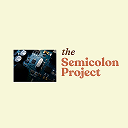Hello, everyone, welcome back!
In the last post, we created a simple circuit that powers up an LED to light up. In this post, we will try to explain everything in a dummy way.
In the last article, I showed you the line diagram of the circuit. I will show you now the side-by-side images of both the line diagram and a visual representation of the circuit:


The image at the top shows the line diagram of the circuit, while the bottom image shows a visual representation the actual component and how it is laid out for connection.
The battery is the source of power, sending current through the lead wire to the resistor before going to the LED. As mentioned before, the resistor limits the actual current going to the LED so as not to damage it. Then the LED is connected to the battery’s other terminal to make a “closed” circuit.
If you are still having a hard time understanding the circuit and the explanation, hit me with a comment below and we will discuss it further.
Now, it would be hard to build the circuit by connecting the individual components directly. It is technically possible, but why would you make your life hard? That’s why, we use a breadboard to connect these components.

The “+” and the “-” rows are the power rails. These rails supplies the positive and the negative current from the power supply, or the battery, to the circuit. The breadboard have two sets of power rails on each side of the breadboard.
The green lines show how these columns are connected. Rows A to E is separated from rows F to J by a gap in the middle of the breadboard. This is intentional to allow advance components, such as Integrated Circuits (IC), to be placed in the breadboard.
Here is the individual components connected in a closed circuit in a breadboard:

And here is the whole prototype setup including the power supply:

I am using a power supply that supplies a mere 5volts to my breadboard instead of using the full 9volts from my battery. I will discuss this breadboard power supply as we progress into a more complex circuits.

The Components:
- Resistor
- LED
- Battery (DC source)
- Lead wires
The Resistor is a passive component which limits the flow of current through a circuit. It’s called a resistor because it “resists” this flow of current yet still allow a smaller amount of current to pass through. Sort of like a funnel which restricts the flow of liquid and only allows a small volume to go through at a given amount of time.

The LED, or Light-Emitting Diode, is a type of diode that transforms electric energy into light. The LED is a glorified lightbulb. Think of it as a more efficient lightbulb, with a lower power requirement and a lot less hotter. It is also unidirectional, you can only make it work by following the polarity (the positive-negative). Connect the LED the wrong way and it won’t work.

The longer leg is the Anode or the positive terminal, and the shorter leg is the cathode or the negative terminal. You connect these to the positive and negative terminals of the battery.
The battery supplies the direct current power to the circuit. Below image is a 9-volt DC battery:

Lead wires are conductors that connects each component together. These wires conducts the current from the DC power source to each component, and back again to the power source to close the circuit. There are different length of lead wires. Choose the right length to make your prototype neater and presentable.

When everything is connected properly, your LED should light up:

That’s it for now. I hope you learned something new today. Next post, we will discuss a little bit more technical as we delve into the Ohm’s Law. Should you have any questions, feel free to comment below.
Reference:
I use Doug Lowe’s Electronics All-in-One For Dummies as a reference. You can buy a copy from Amazon.
Warning:
- Use protective gears, such as goggles, when working with electronics.
- Small electronic components are choking hazards. Adult supervision is required for minors.
